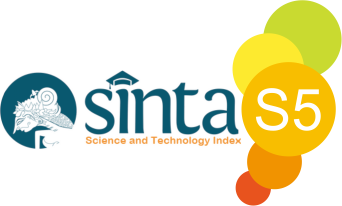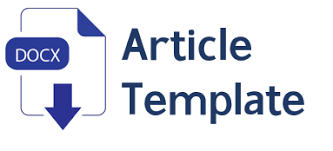Penerapan Metode Time-Driven Activity-Based Costing Untuk Menghitung Harga Pokok Produk Jasa: Studi Kasus Salon Kecantikan Chata Nailart
DOI:
https://doi.org/10.59086/jam.v4i3.1121Keywords:
Time-Driven Activity-Based Costing, cost of services, cost efficiency, salon management, Chata NailartAbstract
Determining the cost of goods and services is a crucial aspect in managerial decision-making, especially in the service industry that has a diversity of activities and resource use, such as beauty salons. This study aims to apply the Time-Driven Activity-Based Costing (TDABC) method in calculating the cost of service products at the Chata Nailart Beauty Salon. The TDABC method was chosen because it is able to provide a more accurate measurement of costs through the calculation of the actual time consumed by each service activity. This study uses a quantitative descriptive approach with data collection techniques through observation, interviews, and documentation of operational activities. The results of the study show that the application of the TDABC method produces a more accurate calculation of the cost of services compared to the conventional method that has been used by salons, because it is able to identify time and resource consumption in detail. Academically, this research contributes by expanding the context of the application of the TDABC method in the small-scale service sector, especially the beauty salon industry, which was previously rarely the object of cost accounting studies. The practical implications of these findings suggest that TDABC can assist management in determining competitive selling prices, improving operational efficiency, and supporting data-driven decision-making of actual costs.
Downloads
References
Aberg, J. A., Gallant, J. E., Ghanem, K. G., Emmanuel, P., Zingman, B. S., & Horberg, M. A. (2004). Primary care guidelines for the management of persons infected with human immunodeficiency virus: Recommendations of the HIV Medicine Association of the Infectious Diseases Society of America. Clinical Infectious Diseases, 39(5), 609–629.
Arifin, Z., & Nugraha, D. (2023). Implementation of Time-Driven Activity-Based Costing in small service enterprises: Evidence from beauty and wellness industry. Journal of Accounting and Business Research, 15(2), 45–58.
Balakrishnan, G., Zhao, A., & Liu, S. (2018). An unsupervised learning model for deformable medical image registration. In Proceedings of the IEEE Conference on Computer Vision and Pattern Recognition (pp. 9252–9260).
Balakrishnan, R., Labro, E., & Sivaramakrishnan, K. (2012). Product costs as decision aids: An analysis of alternative approaches (Part 1). Accounting Horizons, 26(1), 1–20.
Cooper, R., & Kaplan, R. S. (1991). Profit priorities from activity-based costing. Harvard Business Review, 69(3), 130–135.
Devina, M., & Faliany, L. J. (n.d.). Penerapan metode Time-Driven Activity-Based Costing untuk menghitung harga pokok produk jasa: Studi kasus Salon Kecantikan AVV Make Up & Hair Do. Jurnal Akuntansi, 2(April), 130–146.
Edward, H. K. (2020). OM Forum—COVID-19 scratch models to support local decisions. Manufacturing & Service Operations Management, 22(4), 645–655.
Kallio, A. (2018). Using of cost-volume-profit analysis in a manufacturing company (Unpublished research project). Tallinn University of Technology.
Kaplan, R. S., & Anderson, S. R. (2004). Time-driven activity-based costing. Harvard Business Review.
Kaplan, R. S., & Anderson, S. R. (2007). Time-driven activity-based costing: A simpler and more powerful path to higher profits. Boston, MA: Harvard Business Press.
Kaplan, R. S., & Anderson, S. R. (2020). Time-Driven Activity-Based Costing (Background Note 106-068, rev. November 2020). Boston, MA: Harvard Business School.
Keputusan Menteri Tenaga Kerja dan Transmigrasi Republik Indonesia Nomor 102/MEN/VI/2004. (2004). Kepmenakertrans No. 102/MEN/VI/2004 tentang Waktu Kerja Lembur dan Upah Kerja Lembur. Jakarta: Kementerian Tenaga Kerja dan Transmigrasi.
Lee, H. J., & Kim, S. Y. (2022). Enhancing cost accuracy in service SMEs through Time-Driven Activity-Based Costing: A case study from the hospitality sector. Asian Journal of Management Accounting, 8(1), 22–39.
Novák, P. (2021). Research of cost behavior and cost behavior models design for more efficient cost management. International Days of Science, 117–124.
Patricia, E., Bruggeman, W., & Sarens, G. (2008). Cost modeling in logistics using time-driven ABC: Experiences from a wholesaler. International Journal of Physical Distribution & Logistics Management, 38(3), 172–191.
Rahman, A., & Siregar, T. (2024). Application of TDABC in micro and small enterprises: Cost transparency and pricing strategy improvement. International Journal of Business and Economics Research, 13(1), 10–21.
Ramji, B., Labro, E., & Sivaramakrishnan, K. (2014). Product costs as decision aids: An analysis of alternative approaches. Accounting Horizons, 28(1), 1–20.
Wardhana, A. N., Rachmawati, F., & Widodo, E. (2022). Game theory approach for risk allocation in public-private partnership. In Proceedings of the Second International Conference of Construction, Infrastructure, and Materials (ICCIM 2021) (pp. 471–478). Springer.
Zhao, D., Li, Q., & Zhang, H. (2021). Cost management strategy as a determining factor of corporate business quality in the COVID-19 pandemic context. Revista GEINTEC - Gestão Inovação e Tecnologias, 11(4), 3573–3587.
Downloads
Published
How to Cite
Issue
Section
License
Copyright (c) 2025 Chairani Permata Putri

This work is licensed under a Creative Commons Attribution 4.0 International License.
This is an open-access journal. All works are published under the Creative Commons license CC-BY which means that all content is freely available at no charge to the user or his/her Institution. Users are allowed to read, download, copy, write, improve, and create derivative creation even for other lawful purposes, this license permits anyone to, as long as they cite and license the derivative creation under similar terms

This work is licensed under a Creative Commons Attribution 4.0 International License.


















